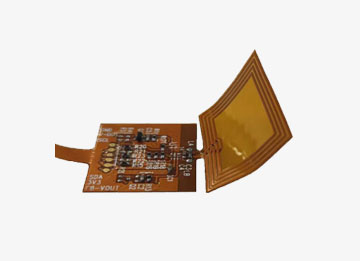With the integration of NFC technology into smartphones, this wireless communication method has become ubiquitous in our lives, and it is also using its security features to protect us. For example, when we want to add some security and privacy protection functions to items in daily life, NFC is very suitable as a simple and low-cost solution, such as transportation cards, bank cards, identity authentication, product authentication, and so on. However, after so many years of development, NFC still faces some security and implementation challenges.
Brand protection brought by NFC
Nowadays, the prevalence of online shopping has begun to affect the sales of a number of traditional brands, especially luxury brands. A series of counterfeit products born under their brand effect have begun to affect not only sales but also brand image. Therefore, many manufacturers have begun to embed various anti-counterfeiting technologies in their products, especially those with unique identifiers, such as NFC. First of all, NFC tags can be deployed in the entire supply chain of production, warehousing, and transportation, allowing brands to manage inventory from the beginning and avoid falling into the gray market on the way, thereby promoting the emergence of "pirated products.". In addition, the small size of the NFC label also achieves "concealment", facilitating direct integration into the product without compromising the image of the product itself.

ST25TV02KC/When purchasing these products, consumers can also use NFC enabled smartphones to read NFC tags and obtain more information beyond the authenticity of the product. This NFC tag chip, such as ST25TV02KC from Italian Semiconductor, has a built-in on-off detection function that allows consumers to determine whether the product has been opened by simple touch. More importantly, in order to attract young people, many luxury goods now begin to add interactive attributes, which can also be achieved using NFC, such as scanning a tag chip with a smartphone app and popping up additional information such as message animations, origin introductions, etc., to add more value to the product.
Can tag chips also disguise?
Although products that integrate NFC in anti-counterfeiting can be described as "one foot high", this does not mean that there is no "one foot high" situation, as some counterfeiting not only begins to target products, but also risks being counterfeited on the NFC label itself. Among the many applications that integrate NFC technology, there is also a popular product form, which is to implant virtual objects into the built-in NFC chip of the product. The best known one is probably Nintendo's Amiibo, which is also in the "piracy hit zone.". Users purchase these Amiibos with NFC tags and use the NFC identification chip on the game console to read and obtain virtual items in the game. Such products have also greatly increased the sales of NFC products. According to data released by Nintendo, as of September 2016, 39 million Amiibo doll dolls had been sold, and more than 30 million Amiibo cards had been sold, especially in Europe, the United States, and Japan. Tencent in China is also officially selling these Amiibos as an agent for Nintendo Switch. However, there are already many pirated products on the market. By writing NFC white cards to disguise as genuine products, virtual items can also be obtained, which undoubtedly poses a significant obstacle to the sales of genuine products. Electronic enthusiast website interviewed Gao Li, the market manager of the MMS market and application department of Italy France Semiconductor. She said that at present, users can indeed buy counterfeit and pirated NFC cards through online channels. In order to further protect the interests of customers from being damaged, for example, adding more security related functions to NFC tag chips. Taking Italian Semiconductor as an example, the core security feature of Italian Semiconductor NFC tags is TruST25 digital signature. Each tag chip purchased by customers from Italian Semiconductor has a digital signature, which can be verified by verifying the digital signature. Italian Semiconductor has also prepared a Demo tool to allow customers to integrate digital signature applications into their own solutions. At the same time, in order to ensure that the information in the chip is not leaked and used for counterfeiting, the NFC chip of STF Semiconductor also has features such as kill mode and untraceable mode. Customers can choose to use different features based on different application scenarios to protect data.
From this perspective, Gao Li, the market manager of the MMS market and application department of Italy France Semiconductor, believes that not only do you need to choose a safe NFC tag chip when making these products, but also do a good job of verification at the NFC card reader end, in order to prevent the breeding of piracy.
Onboard NFC and wireless charging
Another scenario where NFC technology has been widely introduced is in automobiles. With the popularity of digital car keys, fast Bluetooth pairing, and other applications, industry alliances and organizations have also begun to propose different safety standards for on-board NFC. For example, the Car Connectivity Consortium released the 3.0 version of the digital key specification last year, providing the highest level of security currently available. The NFC Forum also issued a CR13 certification for this specification. The Smart Car Alliance Industrial Ecology Alliance has also set strict requirements for the performance of digital car keys such as low-power wake-up and read distance. The ST25R3920B of Italian Semiconductor is the first digital car key reader chip to pass the CR13. With a high RF power design, it can efficiently drive the antenna. Even in scenes where PCB design space is limited such as door handles, it can achieve large interaction distances through a small size antenna. Moreover, the ST25R3920B supports dynamic power output, which minimizes the detection power consumption of the NFC card by measuring the amplitude or phase of the antenna signal. Koryo also mentioned another challenge faced by car mounted NFCs, which is wireless charging. The application scenario of on-board NFC is not only for door handles, but also sometimes integrated into the central control for engine starting. She pointed out that in an increasing number of cars, the central control system has added the wireless charging function of mobile phones. If any NFC card or car NFC card is placed on the charging board, the high power of wireless charging will burn the card. Therefore, the Wireless Charging Consortium (WPC) recommends adding an NFC reader to the wireless charging module. Once an NFC card is detected, it will stop charging, thereby protecting the NFC card. At the same time, many mobile phones now have analog cards, such as Apple Pay and traffic cards. The presence of analog cards can cause mobile phones to be unable to charge wirelessly. ST's car standard NFC reader chip has a patent that can distinguish between physical cards and analog cards, thereby protecting physical cards while ensuring normal wireless charging of the phone. You should know that the current wireless charging power of mobile phones is increasing, but this is only the existing Qi wireless charging and the wireless charging solutions of major manufacturers. In the future, the wireless charging of Ki kitchenware can even reach 2200W, so it will become a trend to add NFC readers and writers to wireless chargers in the future.
epilogue
As a near field communication technology that has been born for many years, NFC did not give a strong sense of existence in the past, but it has undoubtedly found a new direction in this era of product digitization. Users will also benefit from a new understanding of this technology from innovative NFC applications. However, while enjoying the convenience brought by NFC, we cannot ignore the security features that support NFC as a reliable communication.





